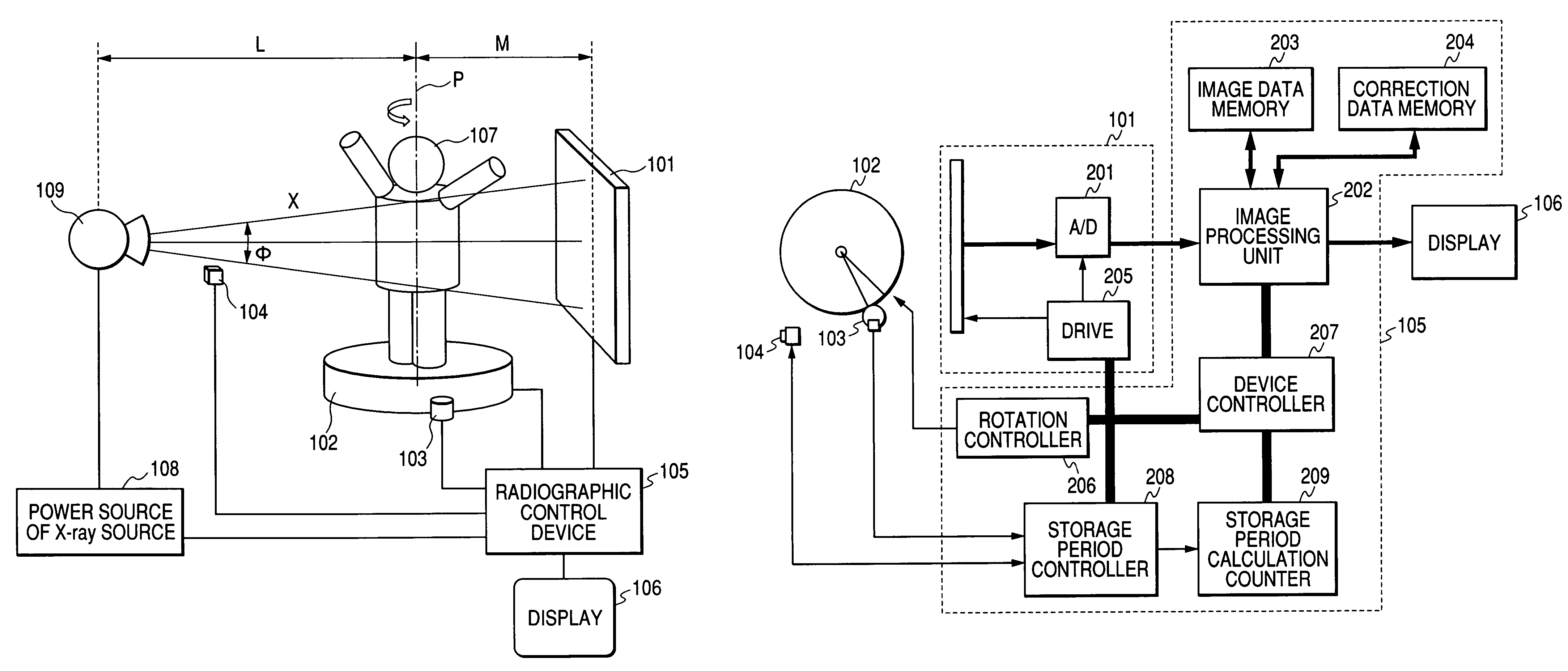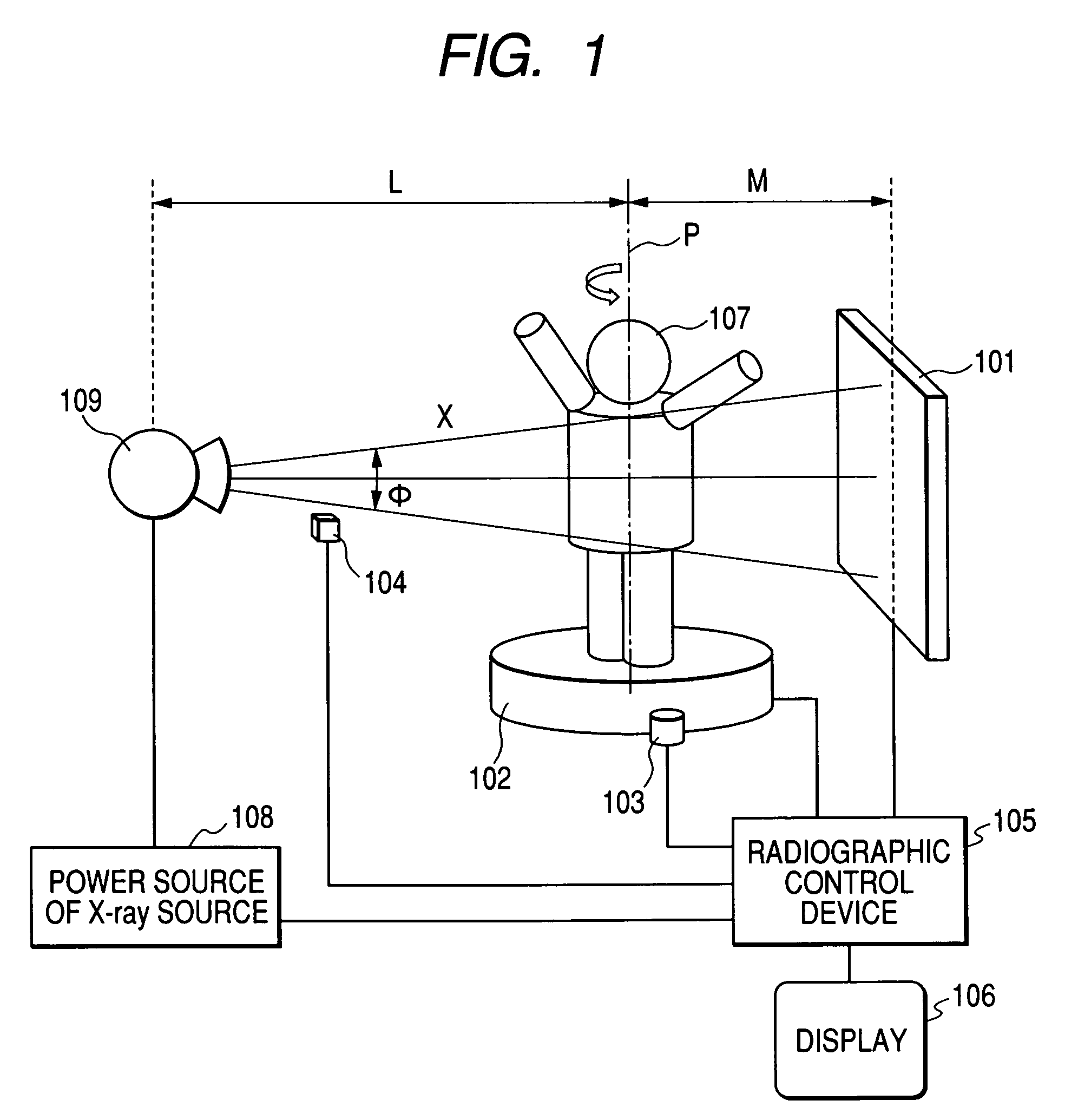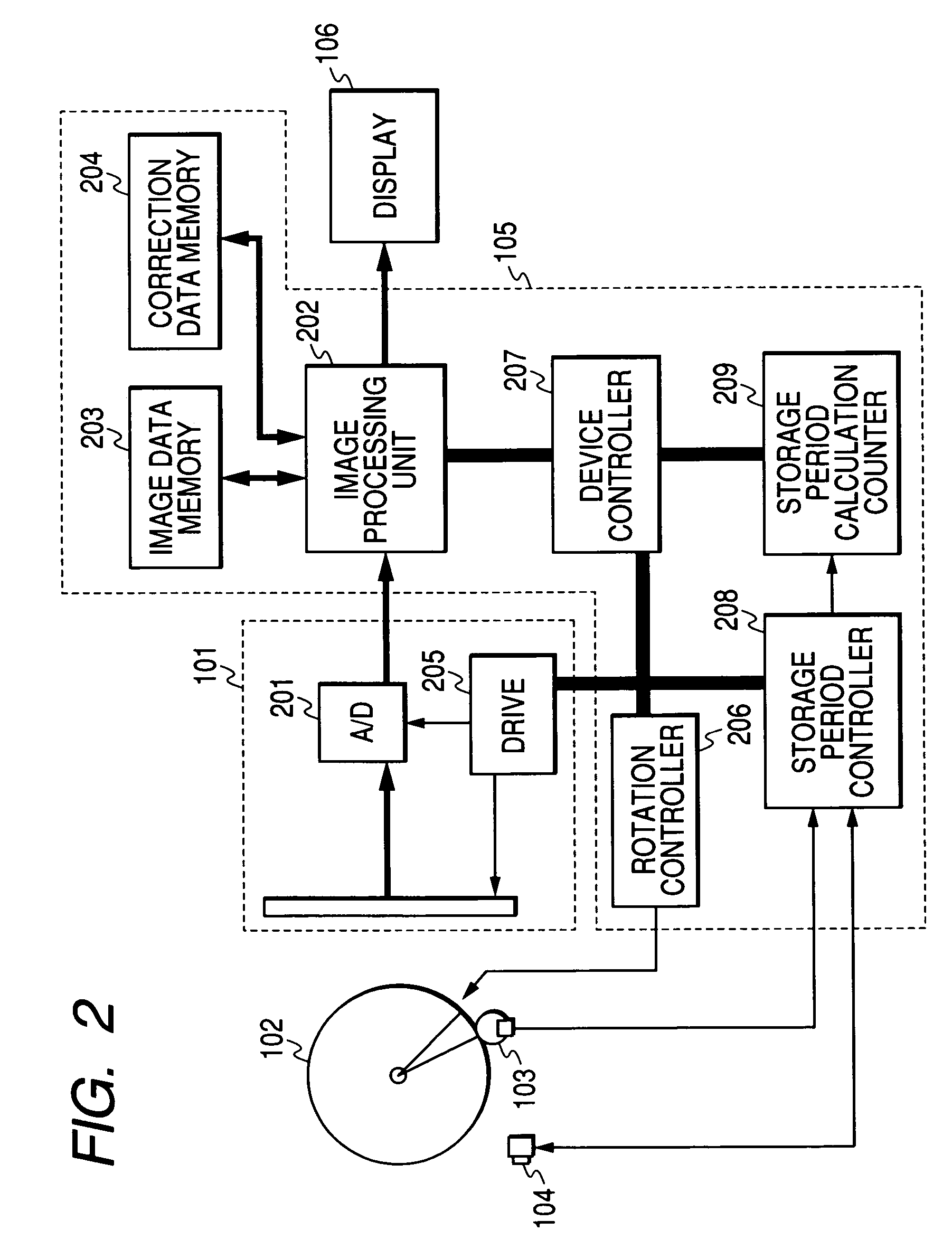Radiation CT radiographing device, radiation CT radiographing system, and radiation CT radiographing method using the same
a radiographing device and radiographing system technology, applied in the direction of tomography, patient positioning for diagnostics, instruments, etc., can solve the problems of object dizziness, centrifugal force applied to the object also increases, and the photographing fails, etc., to achieve high processing speed, low cost, and high sensitivity
- Summary
- Abstract
- Description
- Claims
- Application Information
AI Technical Summary
Benefits of technology
Problems solved by technology
Method used
Image
Examples
first embodiment
[0070]FIG. 1 is a diagram for explaining a schematic construction of the first embodiment of an object rotating type cone beam radiation CT radiographing device according to the invention. In the diagram, reference numeral 109 denotes an X-ray generator (X-ray source); 108 a power source for an X-ray source; X a radiated continuous X-ray; 107 an object; 104 a signal storage type reference element; 102 a rotating device (rotating plate); P a rotary axis of the rotating device; 103 a rotary encoder; 101 an X-ray image sensor panel; 105 a radiographic control device; and 106 a display. Although the X-ray is used as a radiation in the embodiment, another radiation such as α-ray, β-ray, γ-ray, or the like can be used. This is true of all embodiments.
[0071]The X-ray generator 109 is used for general photographing and is used in a continuous X-ray mode. The radiographic control device 105 sets a lamp voltage, a lamp current, and radiation time and controls only the start and stop of the ra...
second embodiment
[0132]According to the second embodiment, an ionization dosimeter is used as a signal storage type reference element. Generally, the ionization dosimeter (area dosimeter) is used as a measuring instrument which is attached to an X-ray radioscopic device and measures radiation exposure of the patient at the time of the radioscopic operation. The area dosimeter is attached to a movable diaphragm portion of the X-ray generator. Component elements other than the area dosimeter are similar to those in the first embodiment.
[0133]In the second embodiment, the area dosimeter is set so as to cover the front surface of the movable diaphragm of the X-ray generator. A value which is measured by the area dosimeter is a total dosage of the X-ray which is generated from a range limited by the movable diaphragm in the X-ray which is generated from the X-ray generator. In the first embodiment, the signal storage type reference element is set to a position where it does not become a shadow on the obj...
third embodiment
[0135]According to the third embodiment, a part of the X-ray image sensor panel is used as a reference element. The operation of the X-ray image sensor panel 101 is substantially the same as that of the first embodiment. As shown in FIG. 4, an X-ray radioscopic image includes portions without a projection image of the object, that is, blank portions. A region 401 surrounded by a broken line among the blank portions is used as a reference signal detecting portion. This region is determined by radiating the very weak X-ray prior to the main scanning and detecting the blank portions. After the reference signal detecting portion is determined, a collimator for removing scattered lines from the object is set to the relevant location of the X-ray image sensor panel. A grid can be also used in common. In the embodiment, since another reference detecting element is unnecessary, the image of the object and the reference signal can be simultaneously obtained as one image data. Thus, the syste...
PUM
| Property | Measurement | Unit |
|---|---|---|
| size | aaaaa | aaaaa |
| size | aaaaa | aaaaa |
| time | aaaaa | aaaaa |
Abstract
Description
Claims
Application Information
 Login to View More
Login to View More - R&D
- Intellectual Property
- Life Sciences
- Materials
- Tech Scout
- Unparalleled Data Quality
- Higher Quality Content
- 60% Fewer Hallucinations
Browse by: Latest US Patents, China's latest patents, Technical Efficacy Thesaurus, Application Domain, Technology Topic, Popular Technical Reports.
© 2025 PatSnap. All rights reserved.Legal|Privacy policy|Modern Slavery Act Transparency Statement|Sitemap|About US| Contact US: help@patsnap.com



